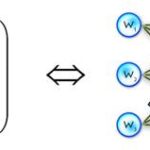Various wage incentive plans and strategies are used by project managers for production plants. Details of some wage incentive plans are given below:
1. Straight piece work system. In this system, the worker is paid at a specified piece rate, for the number of pieces or units produced by him. The standard output is set and the worker is guaranteed a minimum wage. Thus, if a worker produces less than the standard output, he will get the minimum guaranteed wage. If another worker produces more than standard output, he is paid a wage in direct proportion to the number of pieces produced by him at the specified piece rate.
2. Halsey plan. In this system, a standard time is set from past production records for the completion of a job. The worker is guaranteed a minimum wage. If a worker completes the job in the standard or more than the standard time, he is paid at his guaranteed time rate. If a worker completes the job in less than standard time, he is paid a bonus in addition to his base wage at the guaranteed time rate. The amount of bonus varies from 30 to 50 percent of the time saved. If R is the base rate guaranteed per hour, S is the standard time for the job and T is the actual time, then according to Halsey 50-50 plan, the wages for the job will be

3. Rowan plan. In this system, an hourly rate is guaranteed, standard time for the completion of job is established from the past production record. If the job is completed in the standard or more than the standard time, the worker is paid the guaranteed wage. If the job is completed in less than the standard time, the worker is paid a bonus in addition to the guaranteed wage.
According to Rowan plan system, the total earning of the work or wages for the job is given by

4. Gantt plan. In this system, output standard for a given time (standard task level) is set by a careful scientific study of the work. If a worker reaches the standard task level, he is paid a bonus which is usually one-third of task rate. If the worker fails to reach the set standard, he is paid only the guaranteed wage.
5. Emerson’s efficiency plan. In this system, a standard time is established for each job. During each pay period, the number of hours taken by each worker to complete the job is recorded. The efficiency of each worker is calculated which is given as the ratio of the standard time for the job to the time taken by the worker.
The worker is guaranteed his time rate. The work standard is set at a high level. If the efficiency is 66% or below, then the worker is paid his guaranteed wage and no bonus is paid. At 67% efficiency, the worker is paid this time rate plus a small bonus. The bonus increases with the increase in efficiency.


